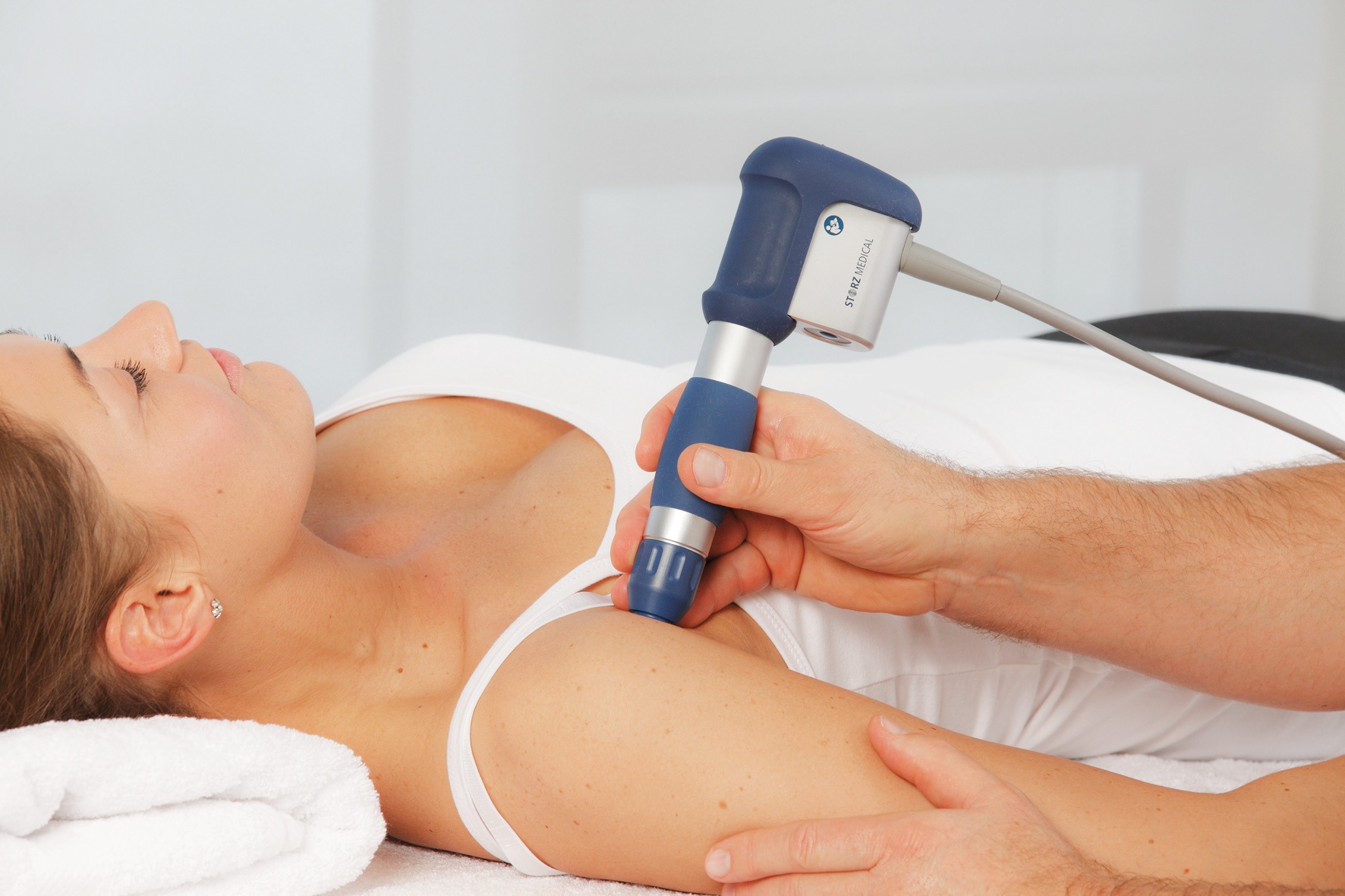What is Radial Shockwave Treatment?
Focused shockwave therapy offers a significant step up in capability in comparison to radial shockwave therapy. There are very few focused shockwaves in the UK. For more information on the differences between radial & focused shockwaves, see the video below.
Radial shockwave provides fast and effective treatment for:
-
-
- Plantar fasciitis | Policeman's foot
- Tendon calcification
- Adhesive Capsulitis | Frozen shoulder
- Achilles tendonitis
- Reduce lumbar spasm
- Pirifiromis syndrome
- Iliotibial Band Syndrome
- Improving osteoarthritic joint mobility.
-



Focused shockwave is very different to radial shockwave. Radial shockwaves are greatest at the skin surface and then become weaker as they diverge in the body and are limited to treating conditions up to 3 cm deep. Focused shockwaves converge as they penetrate the body, reaching their maximum energy at the focus point, around 12.5cm deep. The actual treatment depth is adjustable by spacers, thus allowing treatment at any depth up to 12.5 cm.
Focused shockwave is able to deliver far more energy than radial shockwave, and with far greater precision. As a result, focused shockwave can treat many conditions that are not possible with radial shockwave. Focused shockwaves are high energy sound waves that are delivered deep into damaged tissue with high precision. These high energy waves increase blood flow, improve overall cell structure, stimulate stem cells, release growth factors and have an analgesic effect whilst stimulating the body’s natural repair and regeneration processes.
Focused shockwave is able to deliver far more energy and much deeper than radial shockwave, and with far greater precision
For most, treatment of conditions like tennis and golfers elbow or shin splints would be too painful with radial shockwave, and fractured bone healing would not be realistic with radial shockwave. Focussed shockwave offers treatment with far less pain.
We offer:
- All our therapists have been trained by the UK’s leading shockwave trainer, as provided through Venn Healthcare
- Our equipment is safe. It’s CE approved and manufactured by Storz Medical, the worlds leading shockwave equipment manufacturer.
- It’s fast
- It’s safe
- It’s effective
- It’s non invasive
- It reduces the need for invasive surgery and steroid injections.
- Most acute conditions will improve in around 3 treatments.
- Chronic conditions will probably need up to 6 treatments.
Combine With EMTT
Faster and better results have been witnessed by combining focused shockwave with EMTT treatment. Find out more about EMTT here